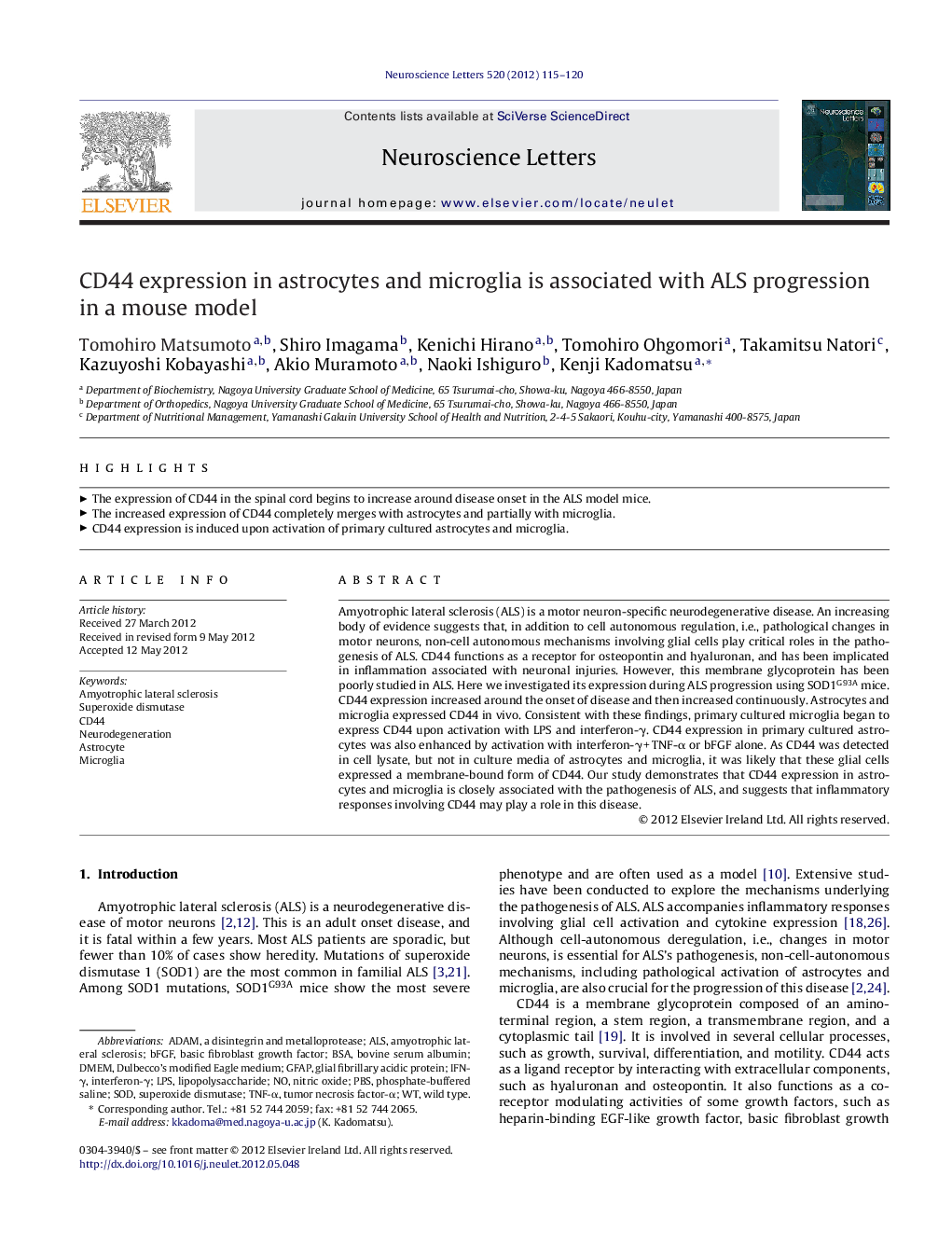| Article ID | Journal | Published Year | Pages | File Type |
|---|---|---|---|---|
| 4344488 | Neuroscience Letters | 2012 | 6 Pages |
Amyotrophic lateral sclerosis (ALS) is a motor neuron-specific neurodegenerative disease. An increasing body of evidence suggests that, in addition to cell autonomous regulation, i.e., pathological changes in motor neurons, non-cell autonomous mechanisms involving glial cells play critical roles in the pathogenesis of ALS. CD44 functions as a receptor for osteopontin and hyaluronan, and has been implicated in inflammation associated with neuronal injuries. However, this membrane glycoprotein has been poorly studied in ALS. Here we investigated its expression during ALS progression using SOD1G93A mice. CD44 expression increased around the onset of disease and then increased continuously. Astrocytes and microglia expressed CD44 in vivo. Consistent with these findings, primary cultured microglia began to express CD44 upon activation with LPS and interferon-γ. CD44 expression in primary cultured astrocytes was also enhanced by activation with interferon-γ + TNF-α or bFGF alone. As CD44 was detected in cell lysate, but not in culture media of astrocytes and microglia, it was likely that these glial cells expressed a membrane-bound form of CD44. Our study demonstrates that CD44 expression in astrocytes and microglia is closely associated with the pathogenesis of ALS, and suggests that inflammatory responses involving CD44 may play a role in this disease.
► The expression of CD44 in the spinal cord begins to increase around disease onset in the ALS model mice. ► The increased expression of CD44 completely merges with astrocytes and partially with microglia. ► CD44 expression is induced upon activation of primary cultured astrocytes and microglia.
